Fungibility and Ensoulment
Commodities are products without souls.
The global market for oil illustrates this fact. End users of oil are only vaguely aware of the complexities of crude oil, usually interacting with it only through selecting one of three grades at the pump. But crude oil has unique traits that vary by source field, with some areas producing light (low density) and sweet (low sulfur content) crude while others produce heavy and sour sludge.
Each trait has value to a refinery as they try to target an optimal blendstock to hit the finished products they desire. But the purchasers of each barrel of crude care little for any factors beyond the cost paid to attain that optimal blendstock. There is no such thing as ‘aspirational’ crude branding, nobody purchases crude for the unique soul of the product.
Instead, each type of commodity seeks maximal fungibility, with the unique story of the product shaved off so that financiers can package it into marketable and forecastable bundles. It’s too difficult and costly to fully appreciate the unique snowflake each barrel of crude truly is, and so instead everything is stripped stripped of its soul and measured against two yardsticks, Brent or West Texas Intermediate. This way, buyers and sellers can simply agree on a price differential to the cost of one of the two benchmarks, collapsing all complexity into a single number.
Becoming viewed as a commodity can be a death knell for a brand or product category. When customers stop seeing an offering as imbued with a spirit beyond the material, margins disappear fast as price becomes the only factor driving purchases. This is why brands are historically so careful about their positioning in the marketplace — Apple could make billions offering a $200 iPhone, but in doing so would remove the Apple Magic™ from their offerings and teach customers to view them as simply another smartphone.
humdog (inspiration for the name of our very own HumDog Millionaire, author of Made in Britain and Chaos Fantasy) wrote the prescient essay pandora’s vox: on community in cyberspace in 1994 predicting the final frontier of commodification: ourselves.
She begins by describing the ways in which cyberspace offers an all-accepting void that beckons the individual:
i suspect that cyberspace exists because it is the purest manifestation of the mass (masse) as Jean Beaudrilliard (sic) described it. it is a black hole; it absorbs energy and personality and then re-presents it as spectacle. people tend to express their vision of the mass as a kind of imaginary parade of blue-collar workers, their muscle-bound arms raised in defiant salute. sometimes in this vision they are holding wrenches in their hands. anyway, this image has its origins in Marx and it is as Romantic as a dozen long-stemmed red roses. the mass is more like one of those faceless dolls you find in nostalgia-craft shops: limp, cute, and silent. when i say “cute” i am including its macabre and sinister aspects within my definition.
(humdog, 1994)
The mass that cyberspace offers is tempting. It promises a form of individuation, but provides that only through a process of subsumption. The mass introduces the individual to their unmet desire for self expression and convinces them that the only way to fulfil it is to join the swarm. A prepackaged and marketable desire/solution combination for any willing to listen.
This step is the beginning of the individual commoditizing themselves. At first, the steps may be small and relatively benign: picking a forum board to frequent, deciding on a handle to go by, adjusting topics and framings to better fit in with the existing culture. The individual becomes a user, now someone whose identity is at least in part formed from the pressures of the networks they frequent.
But as the saying goes, “if you are not paying for the product, you are the product”. The superficial implications of this are obvious, and first order effects like Facebook selling user data or intelligence agencies manipulating social media trends well covered.
humdog describes this excellently, the process of "selling her soul like a tennis shoe”:
i created my interior thoughts as a means of production for the corporation that owned the board i was posting to, and that commodity was being sold to other commodity/consumer entities as entertainment. that means that i sold my soul like a tennis shoe and i derived no profit from the sale of my soul. people who post frequently on boards appear to know that they are factory equipment and tennis shoes, and sometimes trade sends and email about how their contributions are not appreciated by management.
(humdog, 1994)
The choice of tennis shoes as the metaphorical product is incredibly apt. Tennis shoes sit are among an odd class of products that are almost fully commoditized, but just very slightly able to resist that pressure. The bulk of shoes purchased are nothing more than the mass marketing to itself, edges shaved off for broader appeal. But standing alone, at the edge of the void, remains a select few offerings that have risen above. The Air Jordans, the Yeezys, and the 574s are able to command a premium in price or influence precisely because they retain the vestiges of a soul.
But the offerings a little further down the pyramid are not so differentiated. Shoes purchased by middle aged fathers waiting on their family to finish shopping in Walmart are not selected for their popularity, their style, or their celebrity cachet. They are selected for their price and their ability to stop him being bugged by his wife to throw out his ancient pair of Sketchers.
While tennis shoes in 1994 were primarily a commodity and forum posts not yet fully commercialized, they have spent the ensuing three decades somewhat switching places. Those that are sucked into the digital mass are often hoping to become an influencer, the Air Jordans of the space, and instead become another voice in the chorus. The silence of digital space that humdog describes has long since faded, and the loudness war is upon us. Moving from a cyberspace populated mostly by static web pages and bulletin-board style forums to a frenzied network with push notifications and an ever present Current Thing™ means turning down the volume is harder than ever.
The pressure is now to fully sink into the mass and to speak what it already believes but in new words and with a new voice.
The Last Men
Shaped by external forces and a hollowing out of the telos within modern man, the Last Man standing at the end of History, has become little more than a Somatic Zombie. He embraces his own commodification and is happily content to appreciate and consume titillation rather than substance.
The soma is the part of an organism separated from the reproductive cells. It is the body as opposed to the spirit, the part that dies and decays instead of passing on through genetic and memetic lineage. The Christian “human nature" instead of the spirit or the psyche, it can be a valuable source of feedback for the soul at the helm.
But it should never drive the boat.
When the Somatic Zombie embraces his commodification and divests fully from pursuing the Good, the Beautiful, and the True, he instead moves his sights lower. He demands of himself little and less, seeking primarily to "have a good time” or "chill out.” He detaches from the deeper aspirations of the soul and chooses to become the shiniest cog in the machine, the most appealing “factory equipment” in the attention economy. The Somatic Zombie lives in a self-recursive performance loop where his thoughts, actions, and even preferences are shaped by their “marketability.”
He becomes a living commodity. The best way to become a commodity is to sell your soul.
The Somatic Zombie demands of his products little more, settling for a type of Novelty Twist Branding, exemplified well by the sugary sludge offered by General Mills and Nabisco. Content with self-commodification, he approaches the world primarily through the lens of consumption and somatic fulfilment, optimizing not for spiritual or personal growth but rather muffling the cries of his base desires through limited-time riffs on the same base formula.
Cinnamon Toast Crunch encapsulates this well. While the original cereal was plenty popular, the corporate team at General Mills has found a veritable gold mine by releasing a constant barrage of limited time novelty twists on the base formula. Was Tres Leches Toast Crunch not great? Then perhaps you'll enjoy Cinnamon Toast Crunch Minis, Chocolate Toast Crunch, or Apple Pie Toast Crunch! Each offering promises a new experience, but not a fundamentally different one than the Somatic Zombie knows he enjoys. He is able to comfortably explore what feels like new space, but is just a small motion within the larger mass. Trying a new breakfast cereal is not a risky activity in the most extreme of circumstances, but by choosing to range within the predefined brand boundaries already laid out, the Somatic Zombie minimizes his risk even in this meaningless sandbox. He satiates his drive for novelty with the most base, ephemeral, and consumerist option in history.
The human drive for novelty is not inherently toxic and was clearly useful in our ancestral past where experimentation was dangerous but discovering an untapped resource was massively beneficial. But the Somatic Zombie refuses to truly risk anything. Trying a new brand of cereal would still be forging contentment within the mass. Trying a new fruit while on a long hunt when the consequences of it being poisonous would be extreme danger and likely death was decidedly different.
With an informing telos, novelty drive can be incredibly valuable. It pushes artists and entrepreneurs to the edges of knowledge and gives them additional inherent motivation to reach into the beyond and pull what they find back to the group. But the Somatic Zombie, without an informing telos, an aspirant spirit, hijacks that drive and approaches it only from the standpoint of minimizing immediate discomfort and silencing his somatic alarms. He is content with his media being simply portals (as
calls them in his excellent essay linked below) to more portals, each taking a little cash and time away during the transit.This is why the Somatic Zombie does not seem to particularly care about the quality of the products or art he consumes. The point of a new box of Blueberry Toast Crunch to try or a new Marvel Cinematic Universe movie to watch is not to evaluate it for deeper quality with novelty providing the incentive to move away from known and excellent quantities. Instead, novelty is the only point, and any quality is appreciated within tight bounds before the product is discarded and moving on. The Somatic Zombie may create tier lists and rankings of his favorites, but those works are largely an effort to imbue the works with a small drip of additional novelty by re-contextualizing them in comparison to each other.
The experience is still squarely and contentedly within the mass.
Backtalk
Back in 1994, humdog’s experience with cyberspace differed dramatically from the modern world’s. The “personal” computer was somewhat well established, with Apple releasing the MacIntosh in 1984, but even three years after humdog released pandora’s vox only 36.6% of American households had even a single family computer.
This centralized the digital experience to a single location within a home. Or, if the local library or school was the point of access, even more so, with the cyber portal existing in a specific place within one’s town. As a result of this, there remained some amount of skeuomorphism between physical and digital — “cyberspace” was a plane accessed from a Portal located here in the material world.
humdog describes cyberspace as “mostly a silent place”, but silence might not be the best term for it in the modern day. The Internet is now loud, plenty loud. But while certain walled gardens of Direct Messages and voice calls allow for some semblance of human feedback, the majority of the internet is still as she describes, with user-ids shouting endlessly into an experiential void.
cyberspace is a mostly a silent place. in its silence it shows itself to be an expression of the mass. one might question the idea of silence in a place where millions of user-ids parade around like angels of light, looking to see whom they might, so to speak, consume. the silence is nonetheless present and it is most present, paradoxically at the moment that the user-id speaks. when the user-id posts to a board, it does so while dwelling within an illusion that no one is present. language in cyberspace is a frozen landscape.
(humdog, 1994)
Cyberspace may no longer be so silent, but it is enduringly empty. This emptiness is unique to the modern experience. Most of our forefathers who truly experienced solitude were hermits and monks, neither of whom are renowned for their reproductive success. The human experience is fundamentally an enmeshed one, with the group giving tacit and explicit feedback to the individual that shapes them as they shape it.
There is a reason (or one among many) that the most psychotic and totalitarian states in history largely occurred after the advent of mass media. Propaganda is incredibly difficult to do without the distance and dislocation created by moving from performing to broadcasting. When an audience is physically present, members are able to read the people around them and subcommunicate back to the performer, making singlehanded construction of an egregore much more difficult. There is still a core one-to-many relationship between the primary actor and the audience, but there are tacit signals between everyone present that deepen the experience and allow each to infinitesimally participate.
But when the mode of transmission shifts to a largely deaf broadcast with a broken feedback mechanism, that natural and immediate recursion is broken. Messages can be tested and focus grouped to hone their efficacy at whatever explicit goal the broadcasters have in mind and then blasted out to an audience that is not required or expected to provide feedback. Those workshopping messages become themselves “factory equipment,” producing distilled directives for the larger mass. The product they produce can be most effectively summed up as fantasy, an alternative narrative and social structure that sits adjacent to the physical world we all must inhabit.
The move from embodied and reality-informed fantasy to traditional broadcast systems separated the artist from the audience, but cyberspace brought them back together in a digitally twisted resurrection. Instead of a feedback loop relying on tacit signals and subcommunication, the digital loop is both non-physical and mediated through algorithms. Algorithms which have their own agendas, preferences, and incentives. Through this, we see the “factory equipment” slowly pressured to create content and messaging that neither they nor the audience fully prefers, but instead both are dancing to strings pulled by a third party that inserted itself into the conversation.
All of these factors were fully present in humdog’s 1994, but there is an additional factor that increases the size of contemporary egregores to crushing behemoths — smartphones.
When fantasy was limited to campfire stories in the distant past, it served a deeply prosocial purpose. As the Laura Bush quote goes, “when you read with your child, you show them that reading is important, but you also show them they’re important.” The process of deliberate creation of narrative, of distillation of critical lessons, and of interpersonal time spent was and is valuable for building bonds between us.
But fantasy is meant to be a nice vacation home.
You’re not supposed to live there.
Cyberspace, short of the full virtual reality that’s seemingly forever a decade away, is the zenith of fantasy. It has suffused every moment of waking life (and via sleep tracking apps and other telemetry offerings, the unwaking as well.) Somatic Zombies are content with this change, as fantasy demands little from them except assenting to the same consumptive habits they would like to lean into anyways.
It’s now possible to “live” in fantasy in a way that wasn’t before. Even when cyberspace was accessible from within the home via the family computer, bodily functions would require stepping away from the Portal and returning to reality. But with a Portal in our pocket, unreality suffuses every nook and cranny. There is no escaping the mass.
But then, the Somatic Zombie never wants to.
Referentiality and Model Collapse
There’s a broad friction and dissatisfaction evident in media commentary circles as those that are searching for more out of their media are consistently disappointed.
Even if they are simply picky Somatic Zombies (as some would argue commentary channels like RedLetterMedia have become or always were), as the quality of works dwindles, increasingly many are left wondering why things are decaying.
Indeed, why are they?
There are many threads to pull here, and no problem is so lucky as to be monocausal, but artificial intelligence research has recently uncovered something that may apply.
When training a machine learning model like those used for ChatGPT, Grok, Claude, and others, researchers have a wide array of levers to pull when optimizing performance. Most incremental gains come from increasing the number of parameters (the rough analog to human neurons), the amount of training data, and the time spent on training. Step changes, like the one experienced when ChatGPT released, usually rely on more fundamental shifts in architecture or layering techniques.
For the incremental gains, one question quickly arises: what happens if most high-quality datasets are already in the training scope? For example, early deep learning relied heavily on ImageNet, a 14 million image dataset with each image labeled with one or more categories. But whatever alpha can be wrung out of ImageNet has likely long since been found in the time since AlexNet in 2012, the original breakthrough in image classification.
Researchers came to an obvious attempt at a solution as they began to reach the limits of the datasets they had on hand — AI has proven solid enough at generating data, what if we had it generate its own training data?
This approach, using what is called “synthetic data”, quickly ran into issues. Models trained on their own generated data compounded errors, lost grounding in reality, and became less creative.
In a sense, model collapse is when an AI loses itself in synthetic fantasy.

This copy-of-a-copy struggle facing AI is much the same as the one facing our larger postmodern culture. As art is increasingly referencing other, older, art instead of base reality, and as the artists themselves are spending more of their time in fantasy, “synthetic art” is beginning to permeate culture as a whole.
The art of video games is illustrative here. While some indie games keep the embers burning in the far reaches, the majority of games sold these days are little more than Call of Duty 17: The Re-Upping Your Subscription Installment. To the extent that new material is attempted, it’s largely in reference to other games. This cross-pollinating (adding leveling and skill mechanics from RPGs into shooting games, permadeath or other ‘run’ style framings into shooters, etc) is fun and interesting for a time, but there’s little to no truly new material entering the space. It’s all synthetic innovation.
But in the early generations of video games, when the art form was new, things were decidedly different. The Sims, one of the preeminent Girl Games™ of our age and the seller of over 200 million copies, was not based primarily on porting some sort of “Building Game” genre mechanics to a new skinsuit.
Instead, the manual for the first game includes a list of deep and interesting reading material that inspired the game, showing that it drew from a deep well of material beyond the unreality the game itself inhabits.
Pokémon is another excellent example of this early trend. The original creator, Satoshi Tajiri, grew up in a suburb of Tokyo. He enjoyed catching insects in the ponds and fields around his town, and after creating the company Game Freak and developing a few other games, Tajiri focused in on creating a game that hearkened back to the feelings he felt during the deeply human experiences of his boyhood. Those memories, along with a novel use of the link cable technology of the Game Boy, created Pokémon and the worldwide sensation it continues to be to this day.
It’s understandable that as the low-hanging fruit gets picked, successive works of art within a medium begin to self-reinforce their own unreality rather than pointing towards different facets of true reality. The Sims 2 was an easier product to make and market, and it sold excellently as well, but it was forever doomed to only be a riff and a reference, never the original. In his Lectures on Aesthetics, Georg W.F. Hegel describes the process as each form of art seeking to express a fundamental Idea in a particular moment, and once that ultimate point is achieved, the form degrades:
Art’s vocation is to unveil the truth in the form of sensuous artistic configuration, to set forth the reconciled opposition just mentioned [the common world of earthly temporality, and a realm of thought and freedom], and so to have its end and aim in itself, in this very setting forth and unveiling.
Enjoying however an absolute liberty, the Idea does not merely pass over into life: in its own absolute truth it resolves to let the ‘moment’ of its particularity, or of the first characterization and other-being, the immediate idea, as its reflected image, go forth freely as Nature.
(Hegel, Lectures on Aesthetics)
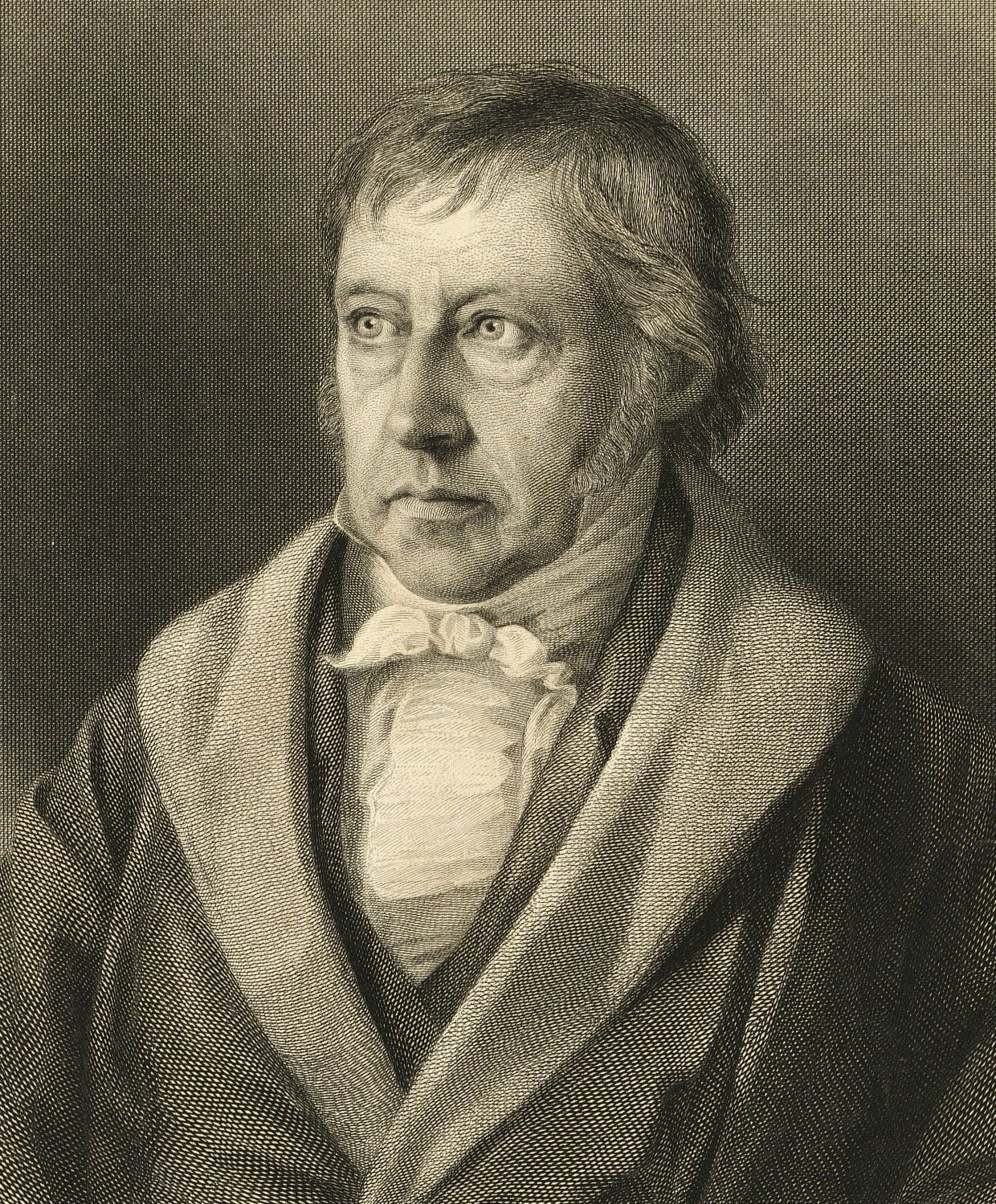
We see this self-referentiality endlessly circling these days, most clearly in the art consumed by the Somatic Zombies. Seeking no higher aspirations, the brief impulse of recognition created by a tongue-in-cheek reference, a brief moment of bathos subverting expectations, or the format of a meme reused constantly for years.
It would make sense to use the image of Leonardo DiCaprio pointing here, but that would be playing our role all too well. Of course, this aside is bathos in its own right. From the mass there is no escape.
Or is there?
The Path to Resurrection
Either directly or allegorically, stories over the ages have pointed towards one simple technique for resurrecting the soul from a decayed husk of a Somatic Zombie.
Kill the soma.
Kill the boy and let the man be born.
To be clear, suicide is not the path to spiritual rebirth. Only one died and rose again, and it doesn’t appear like there will be a repeat any time soon.
But killing the soma’s control, its constant and iron grip on the steering wheel, is the only path towards a complete cure for the Somatic Zombie.
As Steven Pressfield describes it in The War of Art:
Most of us have two lives. The life we live, and the unlived life within us. Between the two stands Resistance.
Have you ever brought home a treadmill and let it gather dust in the attic? Ever quit a diet, a course of yoga, a meditation practice? Have you ever bailed out on a call to embark upon a spiritual practice, dedicate yourself to a humanitarian calling, commit your life to the service of others? Have you ever wanted to be a mother, a doctor, an advocate for the weak and helpless; to run for office, crusade for the planet, campaign for world peace, or to preserve the environment? Late at night have you experienced a vision of the person you might become, the work you could accomplish, the realized being you were meant to be? Are you a writer who doesn’t write, a painter who doesn’t paint, an entrepreneur who never starts a venture? Then you know what Resistance is.
(Steven Pressfield, The War of Art)
Resistance is the soma crying out, requesting and demanding reprieve. It is the will to entropy within all of us pushing for us to be less, to be smaller, and to achieve little. Dreaming is fine for the soma; it’s excellent, even. Dreams prevent action, and action is where acute pain lives.
To communicate with the soma, to kill the soma’s control, we must take action. Action in the real world, in reality, so that there is no retreat available to unreality and nowhere for the soma to hide.
The way to communicate with the soma is through pain.
Choose the pain, and choose the type that results in increased capacity over the long run — no one benefits from us honing our skills at burning our hands on hot stoves. But for the right kinds of pain, the soma will cry out and Resistance will rear its head, but with a tinge of respect that shows that the battle is worth fighting.
The path towards rebirth for the Somatic Zombie shambling onwards in a permanent living death is ironically to lean further into the death, and in doing so come out the other side unafraid and fully alive. The path towards freedom from the soma controlling us is through controlling it.
The path to a resurrection of art, of culture, and of the bonds between men starts in our own bodies and in our own souls.








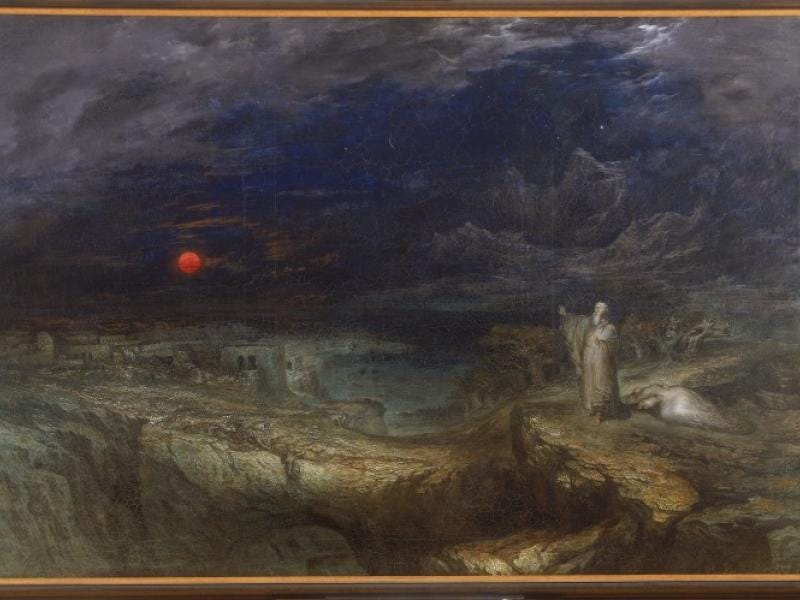
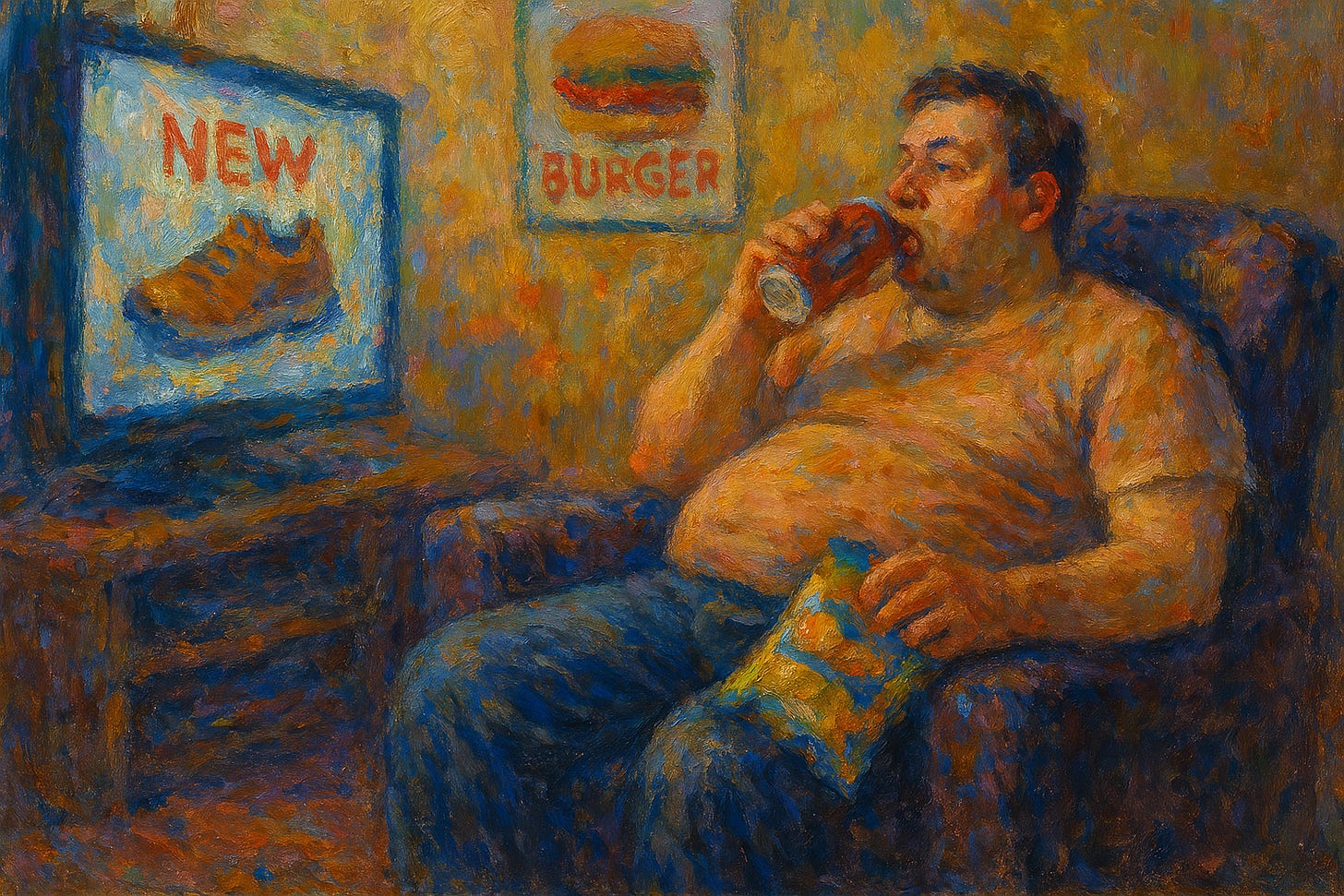




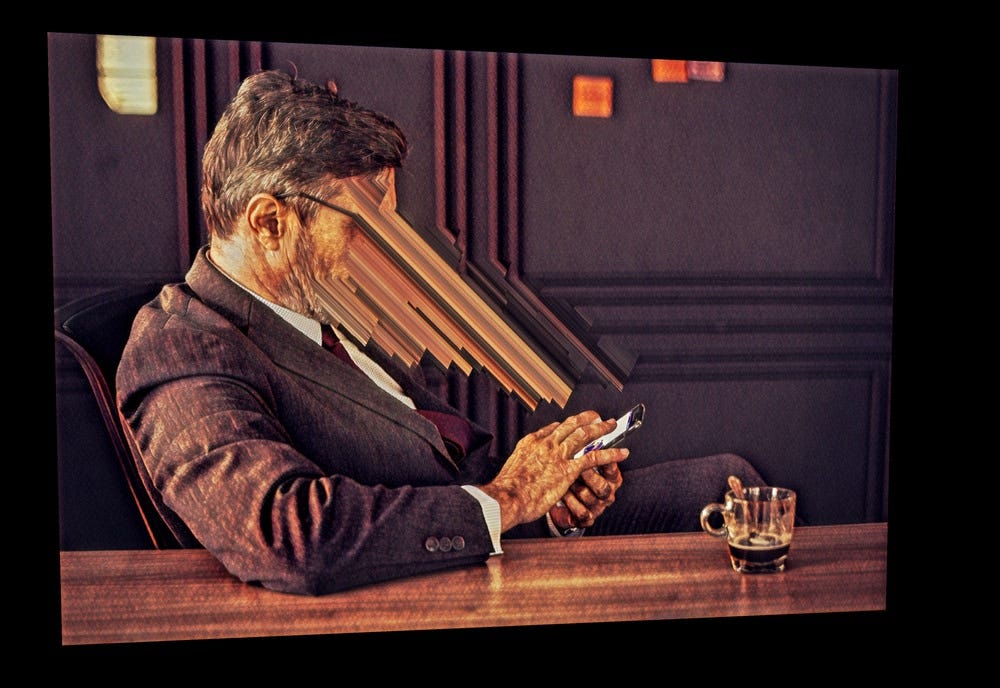

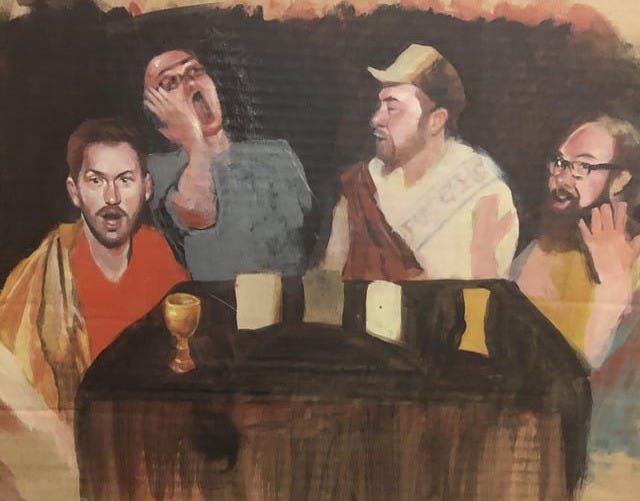



The internet is quickly devolving into a bunch of AIs talking to each other. We’ve gone through so many loops that the internet isn’t even for humans anymore, its not even really for corporations anymore.
What exactly is the point of a public forum divorced from people talking to each other?
I think the way out will be the internet becoming so hostile to flesh and blood people that everyone is forced back into private spaces, and when the AI encroaches on that then back out into reality. My great fear is that the demons emerge out after us.
This assumes that the AIs do not overcome the modal collapse issue which is not a given. Otherwise we may see the decadent insanity elites often go through become democratized down to the masses, as we’ve already gotten a taste of. It could get so much worse if AI is truly let off the leash.
There is some recognition of this potential future from games like the forever winter and ultrakill’s background lore. Of a humanity not wiped out by technology but being warped into a shape more useful for the AI, a world in which humanity is reduced to a mere tool of machines rather than the other way around.
“War no longer needed its ultimate practitioner, it had become a self sustaining system. Man was crushed under the wheels of a machine created to create the machine to crush the machine. Samsara of cut sinew and crushed bone. Death without life. Null ouroboros. All that remained was war without reason.” ~ Ultrakill
This is an excellent essay. A thorough dissection of the modern Parable of the Cave.